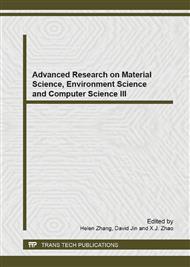p.275
p.281
p.285
p.289
p.294
p.299
p.304
p.309
p.314
Growth and Development of Feijoa with Different Plant Shape and in Greenhouses Environment
Abstract:
In order to explore the relation between tree crown shape and growth development and age of tree, flowering plants, fruiting plants, bearing plants, bearing branch and floweret, length of bearing branch were studied in greenhouse environments after tree corm shape were divided into three groups by live crown ratio of crown width to height and angle from the central leader to first scaffold branch. The result showed that the plants of upright crown shape were 83% at age one year among all plants, 45% at age two years and tree crown shapes, open tree increased to 25% at age of three years. The flowering trees increased from 5% at age of one year to 55% in age of three years and fruit set increased from 0 to 44% following increase of age tree. Open trees had more flowers with 10.6 in 2-year-old tree, 38.6 in 3-year-old tree. Open trees had more percentage of bearing plants with around 47%. The average length of bearing branches was 11.5 cm at open trees, which was more than other crown shapes at age of three years. Open trees had most fruit number per bearing tree (6.5, 8.5 apart). Therefore, creating open tree crown shape may increase flowering, fruiting and yield in greenhouse production of feijoa.
Info:
Periodical:
Pages:
294-298
Citation:
Online since:
January 2014
Authors:
Keywords:
Price:
Сopyright:
© 2014 Trans Tech Publications Ltd. All Rights Reserved
Share:
Citation:


